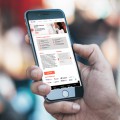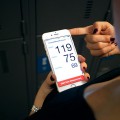Mobile Onboarding for Newbies
— August 27, 2014Introduction
Mobile onboarding is a crucial entry point for user interaction and engagement. The initial screens set expectations, provide guidance, and help users become familiar with the app’s features and interface. For any Mobile Application Development Project, onboarding should be carefully designed to enhance user experience. This guide outlines key insights, techniques, and resources to create an effective onboarding experience that meets user needs and improves app usability.
Importance of Onboarding in Mobile Apps
Onboarding serves a primary purpose: assisting users in feeling comfortable and confident while navigating an app. A well-structured onboarding process minimizes friction, facilitates understanding of functionality, and establishes a positive tone for future interactions. It is essential to evaluate whether onboarding is necessary for a particular app?
Evaluating the Need for Onboarding
Not all apps require onboarding; however, certain scenarios can significantly benefit from it. The following situations illustrate where onboarding can enhance the user experience:
Use Case 1: Gesture-Based Navigation
Apps that rely on gestures and swipes as primary forms of interaction often need onboarding. Users may not intuitively understand which gestures trigger specific functions, which could lead to confusion.
Timely guides users to each gesture and the expected result
Example: A photo-editing app might provide guidance on basic gestures such as pinch-to-zoom or swiping for filters. This onboarding approach can increase user confidence and enable them to utilize the app’s full capabilities.
Use Case 2: Empty State
Applications that start with a blank screen can benefit from onboarding to instruct users on how to populate content or engage with features. Opening an app that appears empty may cause uncertainty about the next steps.
An onboarding shows users how to retrieve their first batch of content.
Example: A task management app with no listed tasks can implement onboarding that explains how to create and manage tasks, facilitating the initial setup and encouraging immediate engagement.
#Use Case 3: Suite of Products
For mobile apps that are part of a larger ecosystem with desktop or web counterparts, onboarding can help users transition between platforms. Familiarity with one platform may require guidance on adapting to the mobile interface.
Example: A productivity suite offering both desktop and mobile versions may use onboarding to introduce mobile-specific features and clarify how data syncs across devices.
#Use Case 4: Personal Information Collection
Apps that require user data—such as age, weight, or location—can benefit from onboarding that clearly explains the reasons for data collection and how it enhances the user experience.
An onboarding tells users why their personal information is needed and guides them.
Example: A fitness app collecting age, weight, and fitness goals during onboarding can offer a more personalized experience through tailored recommendations and progress tracking.
Selecting the Appropriate Onboarding Technique
Choosing the right onboarding technique should align with the app’s purpose to ensure users are effectively informed and engaged. The three common types of onboarding include:
1. Benefits-Oriented Onboarding
– Goal: Focuses on highlighting the value the app provides.
– Example: A meditation app may emphasize benefits like relaxation and stress relief, helping users understand how the app can meet their needs.
Function-Oriented Onboarding
- Goal: Focuses on specific app features and how to use them.
- Example: A mobile banking app may implement function-oriented onboarding to demonstrate how users can check balances, transfer funds, and set up automatic payments, ensuring they can effectively utilize the app’s core functions.
Progressive Onboarding
- Goal: Provides information gradually, triggered by user actions.
- Example: In an e-commerce app, when a user taps on a product for the first time, a progressive tip may highlight the “Add to Cart” button. Similarly, when they proceed to checkout, an in-app prompt may explain the available payment options.
Designing an Effective Onboarding Experience
After selecting the suitable onboarding method, it’s essential to design a flow that feels natural and intuitive. Here are some best practices for creating a seamless onboarding experience.
#1. Keep It Concise and Focused
Users often skip onboarding if it feels too lengthy. Prioritize the most critical information and avoid overwhelming them with excessive detail. Limit each screen to one main point, ensuring users can quickly grasp each concept.
#2. Use Visuals to Guide Users
Visual cues such as arrows, highlights, or animations can enhance engagement during onboarding. Icons, illustrations, and subtle animations can help users visualize actions instead of relying solely on text.
Example: A recipe app may display a brief animation of dragging ingredients into a shopping cart, helping users understand the feature through a dynamic visual.
#3. Provide Skippable and Revisitable Onboarding
Allowing users to skip onboarding and revisit it later empowers them to explore at their own pace. Many experienced users may prefer to skip this step, while new users may appreciate the option to return for guidance.
#4. Add Interactivity for Better Retention
Interactive onboarding, where users can try out actions as they learn, increases retention by providing hands-on experience. Allowing users to engage with features during onboarding enables them to build muscle memory, making actions feel more intuitive.
Example: In a drawing app, users might be prompted to draw a simple shape to practice gesture controls. This hands-on approach fosters familiarity and boosts confidence.
#5. Showcase Key Features with Emphasis on Benefits
While it’s essential to explain functions, connecting each feature to a clear benefit can keep users engaged. They are more likely to continue using the app if they understand how it will enhance their experience or solve a problem.
Example: In a budgeting app, highlighting automatic expense tracking as a time-saver can provide users with a compelling reason to keep using the app.
#6. Gather Feedback Post-Onboarding
At the end of the onboarding process, offer users a short survey or feedback option to gather insights. This feedback can inform future improvements, helping refine the experience over time.
Common Pitfalls to Avoid in Mobile Onboarding
A poorly executed onboarding process can deter users from your app before they even have a chance to explore it. Here are some common mistakes to avoid:
- Overloading with Information: Providing too much information at once can overwhelm users. Keep each step short and focused to ensure a smooth flow.
- Neglecting the “Skip” Option: Not everyone wants to complete onboarding. Omitting a “skip” button can frustrate experienced users who are already familiar with the app’s functionality.
- Forcing User Actions: Mandating that users complete every step in the onboarding process can create friction. Consider offering optional guidance that users can explore as needed.
- Failing to Test with Real Users: User testing is crucial. What may seem straightforward to your development team could be confusing to a new user. Testing helps identify potential roadblocks and optimize the experience.
Using Analytics to Improve Onboarding
Tracking user behavior during the onboarding process is essential for identifying areas that need improvement. Analytics can provide insights into which screens users spend the most time on, where they drop off, and which features may require additional clarification. By using these insights, you can refine the onboarding experience, ensuring it evolves to meet user needs and behaviors.
Tools and Resources for Streamlining Onboarding Design
Implementing an effective onboarding process can be simplified with the right tools. Consider using these solutions that streamline onboarding creation and facilitate easy A/B testing and feedback collection:
1. UserGuiding: An onboarding solution that enables you to create interactive guides and tooltips without any coding.
2. Appcues: A platform that integrates with your app to deliver personalized onboarding flows and user insights.
3. WalkMe: A digital adoption platform that offers in-app guidance, analytics, and feedback tools to enhance the onboarding experience.
4. InVision: A design tool ideal for rapid prototyping, which helps test and gather feedback on onboarding flows before finalizing development.
Conclusion: Crafting the Ideal Onboarding Experience
A well-designed onboarding process can significantly impact user retention and reduce abandonment rates. By carefully selecting the right onboarding methods, designing a user-friendly flow, and actively incorporating feedback, you can create an onboarding experience that not only informs users but also engages and excites them. Remember, the goal is to empower users and make their journey with your app enjoyable and intuitive.
Stay tuned for our next article, where we will explore onboarding techniques tailored specifically for mobile app projects in Vietnam, focusing on advanced strategies that cater to local market needs and user expectations.












